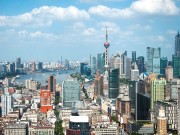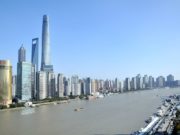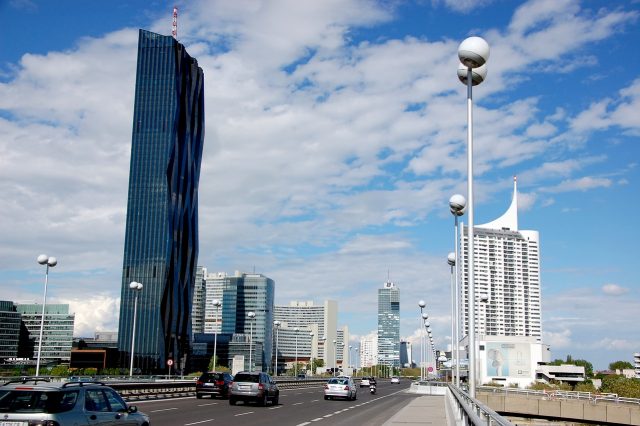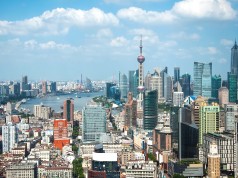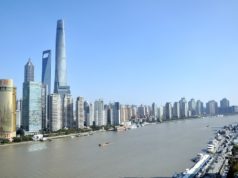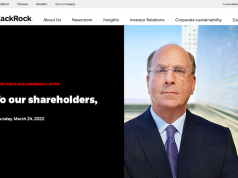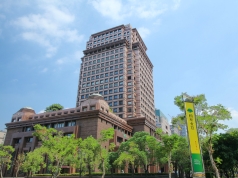Willis Towers Watson: Largest 22 Pension Fund Markets Reached $56.6 Trillion Assets in 2021
19th February 2022 | Hong Kong
Willis Towers Watson (Rebrands to WTW in Jan 2022) – Global institutional pension fund assets in the 22 largest markets (the “P22”) have reached a new record, totalling $56.6 trillion by the end of 2021, according to the latest figures in the Thinking Ahead Institute’s Global Pension Assets Study. This new record follows year-on-year growth of 6.9% in P22 assets in 2021, up from $52.9 trillion in the previous year – when global pension assets first surpassed the $50 trillion mark. More info below | View Global Pension Assets Study.
“ Largest 22 Pension Fund Markets Reached $56.6 Trillion Assets in 2021 “
Thinking Ahead Institute: Global Pension Assets Study 2021

Global institutional pension fund assets in the 22 largest markets (the “P22”) have reached a new record, totalling US$56.6 trillion by the end of 2021, according to the latest figures in the Thinking Ahead Institute’s Global Pension Assets Study.
This new record follows year-on-year growth of 6.9% in P22 assets in 2021, up from US$52.9 trillion in the previous year – when global pension assets first surpassed the US$50 trillion mark.
Continued growth during 2021 means global pension assets have now almost doubled in the last decade – since standing at US$29.3 trillion in 2011.
Split geographically, such growth has been driven in large part by anglosphere countries. During the same annual period, pension assets have grown in USD terms, by 11.6% in Australia, 8.5% in the US and 7.7% in the UK. However, in Asia-Pacific, pensions assets grew by 20.6% in China, 12.2.% in South Korea and 9.4% in Hong Kong. Meanwhile a 1.1% fall in Japan’s pension assets means the UK has overtaken Japan to reclaim the position of second largest pensions market.
New pensions models are also a factor, with defined contribution (DC) pensions showing strong growth in particular. After surpassing 50% of assets in the seven largest pensions markets for the first time ever in 2020, DC pensions have continued their steady ascendancy throughout 2021, to now top 54%.
Concentration in pensions markets has increased, even as relatively smaller countries have also seen growth in their pension assets. As of the new 2021 data, the United States, with US$35 trillion in pension funds alone, now represents 62% of the entire ‘P22’ total. The UK now represents 6.8% with $3.8 trillion in pension funds and Japan represents 6.5% with $3.6 trillion (ranking in second and third respectively).
The seven largest markets for pension assets (the “P7”) – Australia, Canada, Japan, the Netherlands, Switzerland, the UK and the US – collectively account for 92% of the P22, remain unchanged from the previous year.
Pension assets have also grown substantially compared to economic output. Global pension assets for the ‘P22′ reached a fresh record compared to the same countries’ collective domestic product – hitting 76.3% of GDP by the end of 2021.
Individually, in Asia-Pacific, Australia has the highest ratio of pension assets to GDP (172.4%) followed by Malaysia (74.8%), Japan (72.2%), Hong Kong (59.8%), South Korea (55.1%) and China (2.2%). This ratio reflects a number of factors from market valuations and allocations to pension inflows – but captures how pension assets have substantially outpaced economic growth in each respective country in recent years.
During the last ten years, the pension assets to GDP ratio increased the most in Australia (+79pp) compared to other Asia-Pacific countries.
Jayne Bok, Head of Investments Asia at WTW, said: “Looking at the most successful pension markets in Asia-Pacific over the last 20 years, the critical features in determining positive growth have been government-mandated pension contributions, a competitive institutional model and the dominance of DC.
As we look ahead at 2022 and beyond though, this will undoubtedly change. There will be a higher level of accountability placed on firms and the ways in which they generate returns, as growing demand from regulators, stakeholders and society alike call for greater clarity on their investments and sustainability-related actions. The conditions that led to high market returns over the last few years are also changing. Asian pension funds need to be prepared for a more challenging investment regime that includes inflationary pressure, market volatility and corrections, as well as rising rates, that will impact future growth.”
Marisa Hall, co-head of the Thinking Ahead Institute said: “Pensions are becoming better funded in many countries but have also been subject to the growth in value of financial markets. Looking back on a near-doubling in pension assets over the last decade, it is clear this extraordinary valuation of the world’s retirement dreams could bring both challenges and opportunities. High valuations imply financial security but also pose difficult questions about future allocations – and will encourage many pension schemes to continue looking beyond the traditional asset classes, in order to maintain returns.
Investing for sustained growth is going to become an even more nuanced question in future decades. Doubling assets again in the next ten years will need global pension schemes to confront the unsustainability of the global carbon economy and look with renewed imagination at the fundamentals of sources of return.
Alongside maybe this ‘steepest’ decade of decarbonisation, other long-term challenges are at play too. After the tumult of a global pandemic, inflationary pressures and supply chain issues are joining forces, fresh challenges for the western service economies – and renewed scrutiny of the social responsibility of business in the 21st century. Pensions professionals face structural shifts too, with DC funds seemingly the future in most global pensions markets, regulatory pressure and a growing demand from end-savers for easy access to information and an openness about investment decisions.
Leaders in the pensions industry will face a host of challenges – but also fresh investment opportunities – as they navigate a new vista beyond today’s economic, financial and institutional fork in the road.”
About the Thinking Ahead Institute
The Thinking Ahead Institute was established in January 2015 and is a global not-for-profit investment research and innovation member group made up of engaged institutional asset owners and asset managers committed to mobilising capital for a sustainable future. It has over 55 members around the world and is an outgrowth of WTW Investments’ Thinking Ahead Group which was set up in 2002. Learn more at www.thinkingaheadinstitute.org
About WTW
At WTW (NASDAQ: WTW), we provide data-driven, insight-led solutions in the areas of people, risk and capital. Leveraging the global view and local expertise of our colleagues serving 140 countries and markets, we help organizations sharpen their strategy, enhance organisational resilience, motivate their workforce and maximize performance.
Working shoulder to shoulder with our clients, we uncover opportunities for sustainable success—and provide perspective that moves you. Learn more at wtwco.com.
Sign Up / Register
Caproasia Users
- Manage $20 million to $3 billion of assets
- Invest $3 million to $300 million
- Advise institutions, billionaires, UHNWs & HNWs
Caproasia Platforms | 11,000 Investors & Advisors
- Caproasia.com
- Caproasia Access
- Caproasia Events
- The Financial Centre | Find Services
- Membership
- Family Office Circle
- Professional Investor Circle
- Investor Relations Network
Monthly Roundtable & Networking
Family Office Programs
The 2025 Investment Day
- March - Hong Kong
- March - Singapore
- July - Hong Kong
- July - Singapore
- Sept- Hong Kong
- Sept - Singapore
- Oct- Hong Kong
- Nov - Singapore
- Visit: The Investment Day | Register: Click here
Caproasia Summits
- The Institutional Investor Summit
- The Investment / Alternatives Summit
- The Private Wealth Summit
- The Family Office Summit
- The CEO & Entrepreneur Summit
- The Capital Markets Summit
- The ESG / Sustainable Investment Summit


